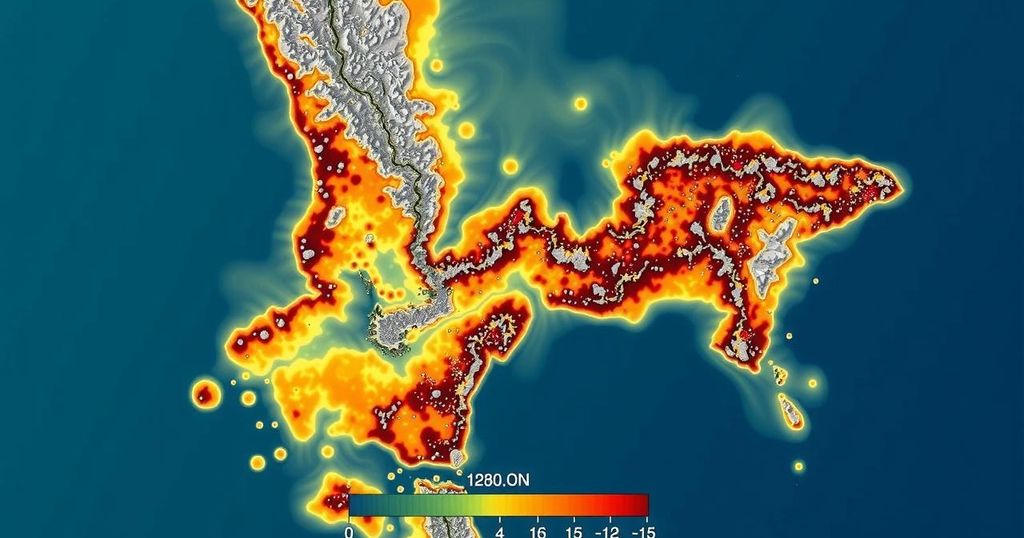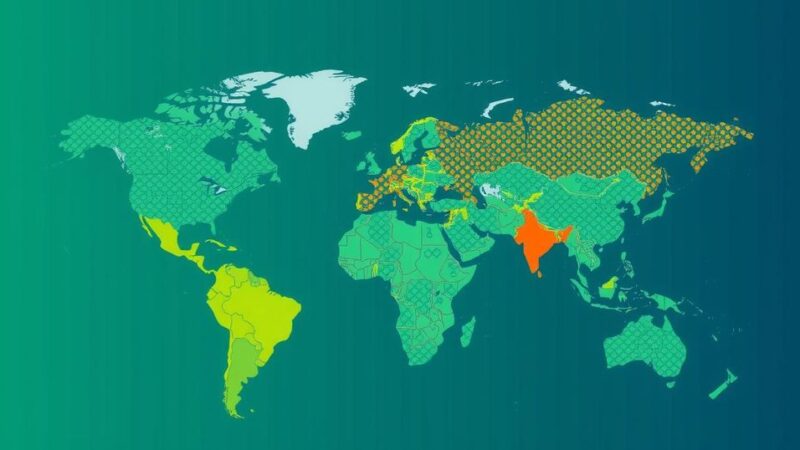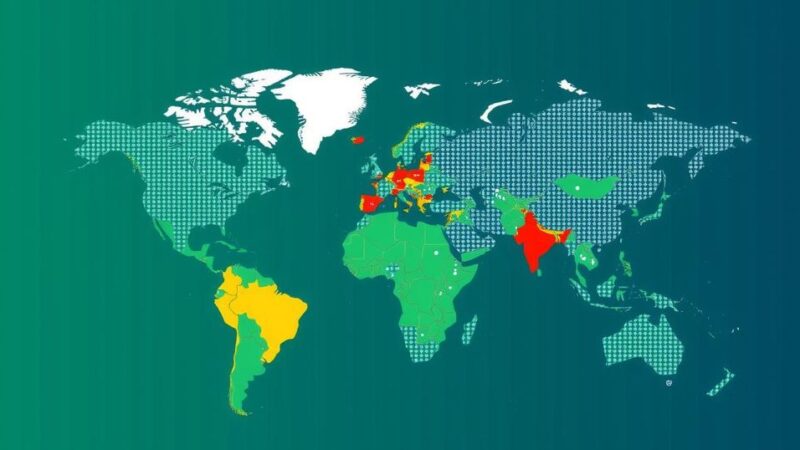The area of land affected by drought has tripled since the 1980s, with 48% of Earth’s surface experiencing at least one month of extreme drought last year. The report indicates that drought poses serious threats to water, food security, and public health, with over 151 million people facing food insecurity due to drought conditions. Additionally, health issues related to climate change, including heat-related deaths and mosquito-borne diseases, have seen significant increases. The findings call for urgent action to address the escalating crisis attributable to climate change.
Recent research indicates that the global area impacted by drought has surged to triple its extent since the 1980s. A report from the Lancet Countdown on Health and Climate Change highlights that nearly 48% of the Earth’s land surface experienced at least one month of extreme drought in the previous year, a substantial increase compared to an average of 15% during the 1980s. Furthermore, approximately 30% of the world suffered extreme drought conditions lasting three months or more in 2023, in stark contrast to a mere 5% in the 1980s. The threshold for defining extreme drought is established after a period of six months characterized by significantly low precipitation or high evaporation rates, or both conditions occurring simultaneously. This phenomenon presents urgent threats to water availability, food security, public health, as well as impacting energy supply, transportation systems, and overall economic stability. The report underscores climate change as a key driver behind the modified global rainfall patterns, which have rendered several regions more susceptible to drought. Notably, the increase in drought conditions has reached alarming levels in areas such as South America, the Middle East, and the Horn of Africa. In South America’s Amazon, the drought is notably altering local weather patterns and using its key role in raincloud formation, which further exacerbates the drought cycle. In conjunction with increasing drought, the report finds that instances of extreme rainfall have also escalated, with 61% of the world witnessing heightened extreme rainfall events over the past decade compared to baseline averages set between 1961 and 1990. This duality highlights the complexity of the relationship between droughts, floods, and climate change, where hotter conditions lead to greater evaporation from soils, intensifying dry spells, while also changing rainfall dynamics. The health ramifications of climate change, particularly through drought, have surged, with 151 million people exposed to food insecurity last year compared to the 1990s. There has been a staggering rise in heat-related fatalities among individuals aged over 65, which increased by 167% relative to the 1990s and a simultaneous rise in mosquito-borne diseases. Specific areas such as northeast Syria and South Sudan have been particularly impacted. In Hasakah, for instance, residents have noticed an alarming decline in available clean water, with some stating they must dig wells that can lead to polluted supplies. In South Sudan, a significant proportion of the nation has encountered either drought or severe flooding, further exacerbating public health issues. “People are ready to kill their neighbour for water,” lamented one resident from Hasakah. The desperation presents a grim reality of resource scarcity in regions long accustomed to instability. Dr. Marina Romanello of the Lancet Countdown articulates the urgency of climate change, stating that “The climate is changing fast. It is changing to conditions that we are not used to and that we did not design our systems to work around.” The ongoing trend raises critical concerns about the sustainability of water resources and the livability of affected regions in the future, especially if greenhouse gas emissions remain unabated.
The rapid increase in drought conditions is largely attributable to climate change, which has transformed global rainfall patterns and intensified drought occurrences across various regions. The Lancet Countdown report presents alarming statistics about the global landscape’s vulnerability to both drought and sudden flooding, illuminating how these extreme weather events impact public health, food security, and overall ecological balances. These trends serve as a critical reminder of the pressing need for sustainable practices and preparedness in a changing climate.
The findings from the Lancet Countdown report detail a stark reality of a world increasingly afflicted by extreme drought, with significant implications for food security, health, and overall societal stability. The alarming statistics compel immediate action to mitigate climate impacts by reducing greenhouse gas emissions, as the interplay between drought and extreme rainfall signals a profound shift in global weather systems. Without decisive measures, regions worldwide will likely face dire consequences in the future, underscoring the urgent need for global cooperation in addressing climate change.
Original Source: www.bbc.co.uk






